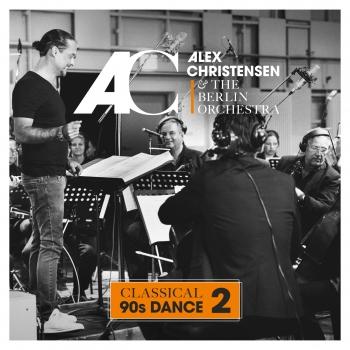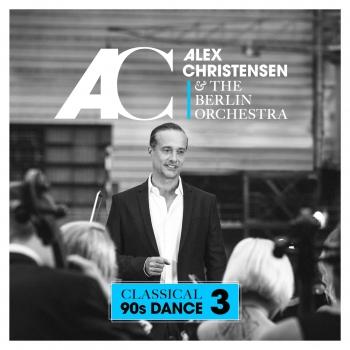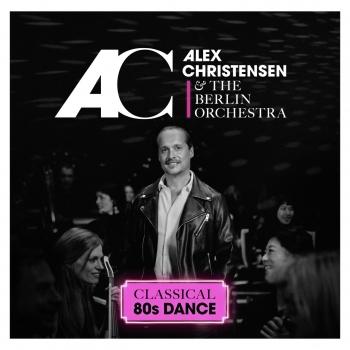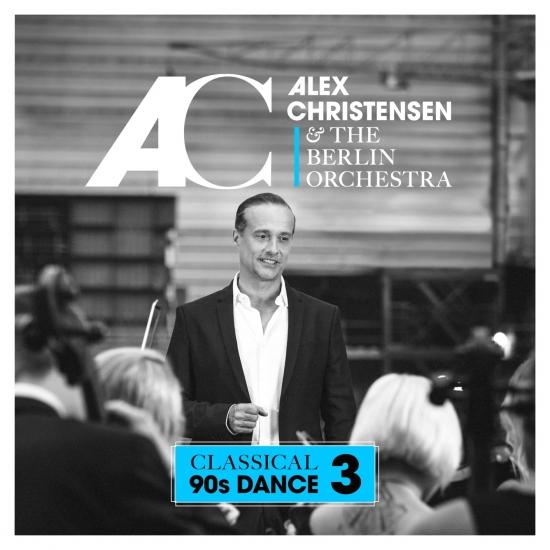
Classical 90s Dance 3 Alex Christensen & The Berlin Orchestra
Album info
Album-Release:
2019
HRA-Release:
01.11.2019
Album including Album cover
I`m sorry!
Dear HIGHRESAUDIO Visitor,
due to territorial constraints and also different releases dates in each country you currently can`t purchase this album. We are updating our release dates twice a week. So, please feel free to check from time-to-time, if the album is available for your country.
We suggest, that you bookmark the album and use our Short List function.
Thank you for your understanding and patience.
Yours sincerely, HIGHRESAUDIO
- 1Gypsy Woman (La-Da-Dee) [feat. Linda Teodosiu]03:34
- 2The Sign (feat. Natasha Bedingfield)02:47
- 3Everytime We Touch (feat. Maite Kelly)03:46
- 4Somebody Dance with Me (feat. Asja and Ski)03:50
- 5Into Loneliness00:54
- 6Lonely (feat. Luca Tarqua)04:13
- 7It's Alright (feat. Eloy de Jong)04:12
- 8Missing (feat. Natasha Bedingfield)04:15
- 9The Rhythm of the Night (feat. Yass)04:08
- 10Intro Fantastic00:23
- 11Barbie Girl (feat. Asja Ahatovic & Eniola Falase)02:58
- 12Love Religion (feat. Yass)03:59
- 13Free (feat. Linda Teodosiu)03:41
- 14Believe (feat. Giovanni Zarella)04:04
- 15Heaven (feat. Polina Vita)04:04
- 16Meet Her at the Loveparade03:51
- 17Wonderful Dream (Holidays Are Coming) [feat. Thomas Anders]03:52
Info for Classical 90s Dance 3
Gute Nachrichten für alle Freunde Dance-Popsongs der 90's in faszinierend-orchestraler Neudeutung: ALEX CHRISTENSEN führt seine erfolgreiche Albumreihe „Classical 90's Dance“ fort! Und weil aller guten Dinge bekanntlich drei sind, setzt er seinem ambitionierten Projekt mit CLASSICAL 90's DANCE 3 nun die Krone auf.
Es ist viel passiert seit der Veröffentlichung von „Classical 90's Dance 2“ im Oktober 2018. War dem Vorgänger „Classical 90's Dance“ 2017 mit satter Top-10-Position in den deutschen Albumcharts bereits ein Riesenerfolg geglückt, ging der Nachfolger aus dem Stand auf die 4. Und Alex Christensen wurde, vollkommen zurecht, einmal mehr als Pop-Visionär gefeiert. Seine Idee, Melodien und Harmonien von Dance-Hits der 90er-Jahre mit dem Klangkörper eines Orchesters neu und zeitlos zu beleuchten, schlug ein - nicht nur in den Charts, sondern auch im kollektiven Pop-Gedächtnis. Schnell und beachtlich nachhaltig. Während Neuveröffentlichungen heutzutage nach der ersten Verkaufswelle kaum noch gefragt sind, wurde Christensens „Classical 90's Dance“-Reihe zu einem wahren Dauerbrenner. Nach über 30 Millionen Videoviews wurde knapp 18 Monate nach dem Release von „Classical 90's Dance“ der Auftakt der Albumserie mit Gold für über 100.000 Alben ausgezeichnet. Und „Classical 90's Dance 2“ rückt der Edelmetall-Markierung ebenfalls zunehmend näher.
Da soll nochmal jemand behaupten, im Pop sei alles bereits gesagt! Alex Christensen schuf mit „Classical 90's Dance“ brillante Alben und sogar noch ein neues Genre: Orchestral Dance Music. Und Fragen zu stellen, weil man manchmal nicht en Detail weiß, wie etwas funktioniert, ist für Alex Christensen keine Schwäche, sondern eine gezeigte Stärke. Eine Stärke, die ihn schon Anfang der 90's als Pionier der ersten Stunde kennzeichnete, als er die Eurodance-Revolution maßgeblich mitentfachte. Seinerzeit konnte man sich nur in Hollywood die ganz teuren Sampling-Maschinen leisten. In Hamburg, wo Christensen auflegte und Dance-Song-Ideen schmiedete, musste man sich mit vergleichsweise spartanischen Mitteln weiterhelfen. Aus dieser vermeintlichen Notlage entstand eine Umwälzung, die die Musikszene für immer verändern sollte. Und der Visionär Christensen war als einer der Aufständischen ganze vorne dabei. Mit Classical 90's Dance 3 schließt sich für ihn jetzt ein Kreis. Es geht ihm immer noch darum, etwas Neues zu schaffen, sich selbst und zeitgeistige Formeln zu hinterfragen, um tanzbare Musik immer wieder anders zu gestalten zu können.
Auch für „Classical 90s Dance 3“ hat sich Alex Christensen wieder nationale und internationale Superstars als Gäste ins Studio geholt: Natasha Bedingfield, Maite Kelly, Eloy de Jong, Thomas Anders und Giovanni Zarrella. Ein Wiedersehen gibt’s mit der ein oder anderen Stimme der ersten beiden Alben wie Yass, Linda Teodosiu, Asja Ahatovic und Polina.
Im nächsten Jahr werden Alex Christensen und das Berlin Orchestra die Songs von „Classical 90's Dance“ zusammen mit ausgewählten Sängerinnen, Sängern und vielleicht auch mit dem ein oder anderen Gast auf einer ausgedehnten Tour live präsentieren. Das Motto der Tournee zu erklären könnte einfacher nicht sein: EIN ABEND – NUR HITS!“ Und genau das wird es sein, was die Zuschauer von den Konzerten erwarten können.
Alex Christensen, musikalische Leitung
The Berlin Orchestra
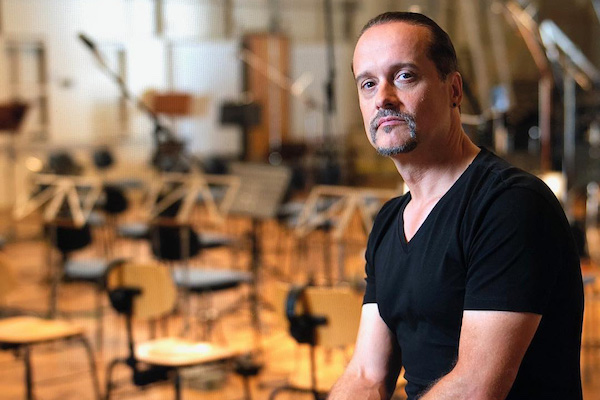
Alex Christensen
Music is like history. When the system goes through a change, the counterrevolution is usually not far behind. In the 1980s only high-earners could shape the future of music. Sampling was the word of the day and anyone who could spend half a million dollars could sample right along – using sluggish equipment that was already completely outdated. Young people, always the most important driving force behind pop music, couldn’t boast a Trevor Horn because they couldn’t operate the means of production.
At the change of decades revolution was in the air in the clubs when DJs changed the music to a persistent rapid beat. The tools were simple: catchy ideas, two turntables, samplers that were now affordable, a microphone, and haunting or original voices. Again, the hits came from the underground, from sweat-drenched fanatics mixing house beats with their own short, concise melodies. Techno dance, the youth and party culture whose offshoots persist to this day, permanently reoriented music perception.
Alex Christensen, a DJ of the first hour (long before there were USB sticks, by the way), set the tone when he helped get the techno dance and Euro-dance movement going. He first got Germany dancing, then Europe, and finally the whole world. Almost on his own. He penned Ritmo de la noche, the summer hit from 1990. Things then started happening in rapid succession for the self-described music maniac from Hamburg: the first gold record for Ritmo, constant inquiries for production jobs, every club wanted to book him as DJ to guarantee a full house.
Finally in 1991 he fired off a rocket of unimagined magnitude: Das Boot by U96 stayed at number one on the German singles charts for a full 13 weeks, caused an uproar throughout Europe, and single-handedly paved the way for the techno scene to enter the mainstream. Alex Christensen was everywhere: the cover of BRAVO, guest roles in Hollywood films and on the series Marienhof – the whole nine yards. What no one dreamed at the time is now a fact. The name Alex Christensen has become one of the few abiding brands of the international music scene.
His list of credits is as long as it is impressive. He’s worked with Udo Lindenberg, Helene Fischer, Söhne Mannheims, Tom Jones, Paul Anka, Sarah Brightman, Mark Wahlberg aka Marky Mark. He’s been a judge on Popstars, has had great success with his own songs time after time (Du hast den schönsten Arsch der Welt), and through it all has always been someone who prefers to remain backstage. Talk to him today and he’ll call himself a “music-obsessed family man who can’t leave well enough alone and is constantly challenging himself to explore new musical adventures.”
He goes on to say that music brings out a downright childlike play instinct in him. Even now. After unknown thousands of hours in the studio, DJ booth, using analog equipment that would easily fill a truck. We can take his word for it. His range – the spectrum of musical styles that have given inspiration to his pop music for the past three decades – is unprecedented. Dance tracks, ballads, electronic excursions, classic singer-songwriter projects, flawless pop: under Alex Christensen’s production everything sounds like it should sound, but never by accident. Alex Christensen’s most extraordinary project to date is now finally approaching completion.
With Classical 90s Dance this reserved German has come full circle, as he puts it. “‘Das Boot’ was originally a piece for strings. But when we recorded it with U96 in 1991, I had neither the knowledge nor the tools to record with strings. The fact that I’ve now been able to combine orchestral music with my dance roots while recording Classical 90s Dance rounds out my entire oeuvre. People can finally understand why Christensen spent ten years on orchestral music.” Alex Christensen created the 49-member Berlin Orchestra, a gathering of the capital’s best orchestral musicians, specifically for this album. And he hired very young female vocalists exclusively, with the plan to revitalize a selection of the best techno dance tracks of the 90s with a modern sensibility.
Who could have been more predestined for this task than Alex Christensen? Under his direction Classical 90s Dance has become an extraordinary project, large and ambitious – much more than a remake or remix of early-90s hits. Together Christensen and the Berlin Orchestra rock the patina and mildew from the graceful contours of the 14 songs. “Once the pieces were freed from their admittedly antiquated-sounding gowns, I felt there were first-rate songs with wonderful structures hiding behind the dance costumes, if you will,” Christensen rhapsodizes. “They have entered the DNA of people my age or 15 to 20 years younger. I’m sure a lot of people will revel in these songs again when they hear our modern versions. They sound like they’ve continued their logical development.”
Rhythm Is A Dancer, Sonic Empire, Nessaja in the Scooter version, What Is Love, Redemption, and Children can be discovered and enjoyed differently in the new Classical 90s Dance versions: still danceable but no longer arranged primarily for dancing – not by a long shot. The Rise / No Limit even plays around with sumptuous Wagner references and so really has no limits any longer. “When I was selecting the songs for the album, of course I had a mountain of material to work with,” recalls Alex Christensen. “However, quite a few things didn’t make it to the final decision because they simply didn’t move me. But all the songs that made it into the album have great emotional value. Classical 90s Dance could have a subtitle if it weren’t so long: The evolution of dance tracks into songs whose emotional content is unconditionally moving.”
This album contains no booklet.







